
On the Severn Estuary
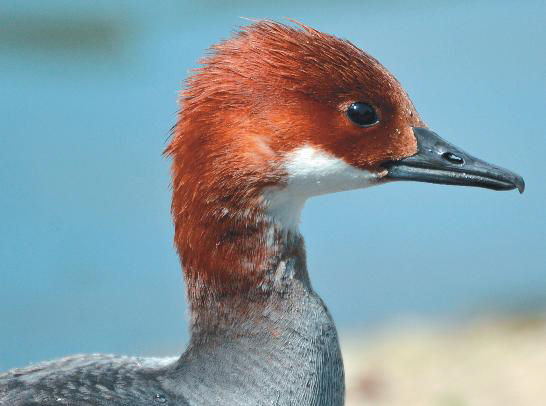
Female Smew
Slimbridge Wetland Centre in Gloucestershire is Britain’s largest wildfowl reserve, home to a diverse collection of birds and other creatures from all around the world. There are 2,500 permanent residents, including many rare species, and around 30,000 visiting birds every year.
This charming waterside location has been attracting visitors since it opened in 1946. The tranquility of the wetland walks, and the views across the estuary, hold appeal for young and old alike. The Visitor Centre doubles as an art gallery, displaying paintings of wildfowl along its walls. There’s also a gift shop and a theater showing flms about the work of the Wildfowl and Wetlands Trust (WWT).
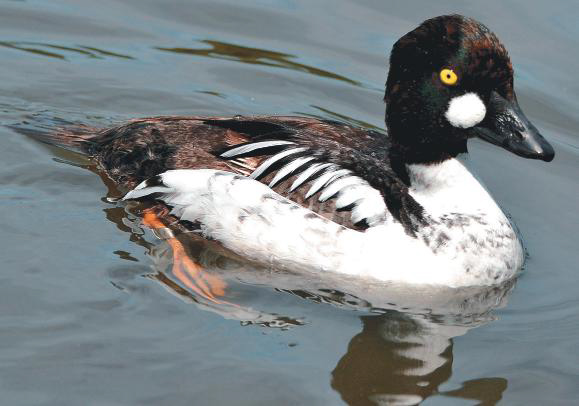
Common Goldeneye
In all, the Wetland Centre covers 120 acres and has a landscaped visitor area. The main walking route is about a mile long and leads on a journey past wildfowl ponds, reed-beds and ponds. They’re home to geese, waders and some truly exotic species of wildlife, including mandarin ducks, cranes and famingoes. Additional paths take you out to the hides and onto the bank of the estuary. There are more than two miles of paths in all.

Male Wood Duck
Both birds and people fock to Slimbridge in the summer, but in the winter wildlife diversity is most vibrant. Flocks of white-fronted geese, Peregrine and Merlin falcons, northern geese, wading birds and songbirds all arrive at the center during the winter months to enjoy Britain’s relatively mild winter. Some species such as Bewick’s swans come from as far as arctic Russia.

The Visitor Center at Slimbridge includes cafe, shop, theater, gallery and observation tower.
The early days
Peter Scott, the son of Antarctic explorer Robert Falcon Scott, established Slimbridge Wetland Centre in November 1946. An early leader in wildlife conservancy, Scott was subsequently knighted for his efforts. Slimbridge was the frst of his Wildfowl and Wetlands Trust reserves. There are nine around the UK today, with Slimbridge still the fagship site and the largest.
Scott identifed the location as ideal for a wetland reserve, because the Severn Estuary is located on one of Europe’s principal fyways. The broad, wet marshes attract a wide variety of birds that stop over on seasonal migrations.
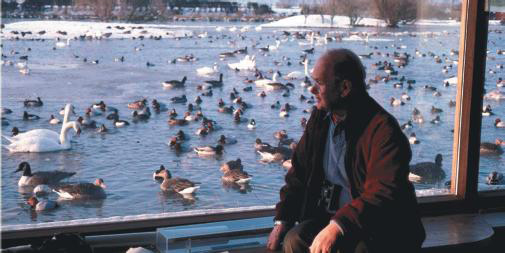
Founder Peter Scott watches the swans during Slimbridge’s mild winter.
In 1950, after Princess Elizabeth had seen Trumpeter Swans while touring Canada, fve were promised to her as a gift—but they proved troublesome to catch! At Lonesome Lake in British Columbia, however, conservationist Ralph Edwards was feeding a relatively tame fock of Trumpeters. With Edwards’ assistance, Scott caught fve of the birds, and in 1952 they were transported to England. One died, but four thrived in Slimbridge’s wetland habitat. The Queen later became the WWT’s patron, and Prince Charles became the charity’s president.
See the rarest goose in the world

Slimbridge is home to a breeding population of rare Hawaiian nenes.
A remarkably diverse collection of 164 wildfowl species inhabit Slimbridge. One of the highlights is the Hawaiian nene geese, brought back from the brink of extinction by a breeding program in the 1950s. The geese were reintroduced to their native Hawaii in the 1960s, but not without unforeseen challenges. In an attempt to reintroduce the nenegeese into Hawaii, the birds were killed by predators. So measures were put in place to protect them, making the next reintroduction successful. Although their numbers in Hawaii have increased, the nene geese are still the rarest goose in the world. Today, visitors to Slimbridge can see a breeding population of these rare birds.
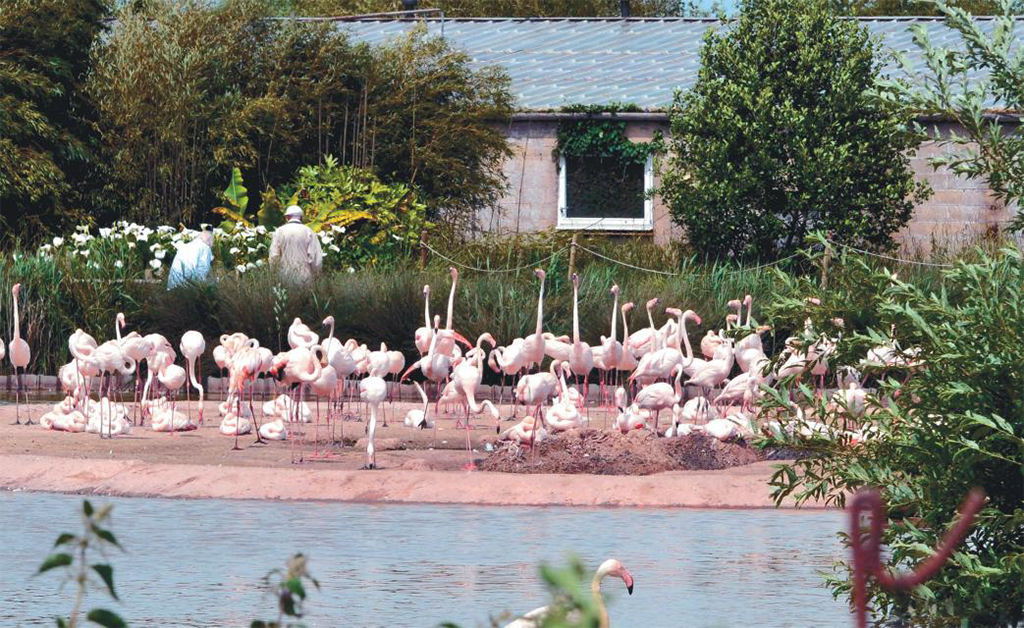
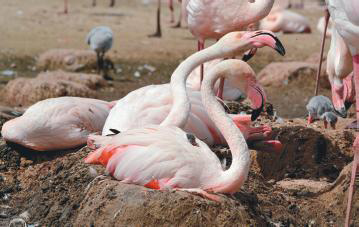
Colorful famingoes from five continents live in separate territories in the shallow lagoons that mimic their native habitats. The birds coats are kept pink by a special diet of shrimp and pink algae.
Diversity at its best
Visit Slimbridge today, and you’ll experience some of Britain’s best wetlands, most diverse bird habitats and some charming water gardens.
Ducks wander around the tidy paths and boardwalks looking for food, which you can buy at the Visitor Centre. Flocks of geese, ducks, swans and famingoes provide a visual feast of raucous activity. As you stroll around the center grounds, 13 hides offer views out to the lakes and estuary, with the opportunity to watch creatures as diverse as kingfshers and water voles in their natural habitat.
For closeup views of small mammals, there’s a manmade tunnel housing harvest mice habitats, otters’ sleeping areas, shrews and captive water voles. You can peer inside, and with a bit of luck, catch a glimpse of the little critters in action.
At the edge of the River Severn estuary you can literally walk for miles along the waterside. There’s a unique bird hide inside a derelict old van on the edge of the estuary—not something you see every day.
The number of species on the estuary varies throughout the year, but generally, visitors spot up to 70 species of bird in a day. At times of heavy migration you should be able to view up to 120 species on one visit.
The New Flamingo Lagoon
Visitors can see all six of the world’s famingo species at Slimbridge. They all eat a special diet of pink algae and shrimp; the pigments in the food keep their feathers pink.
The UK’s largest fock of greater famingos resides in their new Slimbridge home. Flamingo Lagoon offers a sunken observatory, enabling visitors to get a unique underwater perspective of the birds’ living quarters. The habitat is designed to mimic an African lagoon, which is perfect for the greater famingos to breed. In summer 2014, there were lots of youngsters and eggs, so the venture has been very successful.
Four of the world’s species of famingo are classed as Vulnerable or Near Threatened. Fewer than 30 breeding sites for these birds remain in the world, so their breeding at Slimbridge is crucial to their survival. Their biggest threat in the wild is habitat destruction and disturbance.
The Great Crane Project
Slimbridge has also been involved in the Great Crane Project, a nationwide venture to reintroduce native cranes into the wilds of Britain. Wildlife reserves across the UK work together on the project and to date, the Great Crane Project has led to 76 cranes being released onto the wild. The only pair to actually breed in the wild, though, has just lost their chicks to a predator on the wider Slimbridge estate. Perhaps next year will bring success.
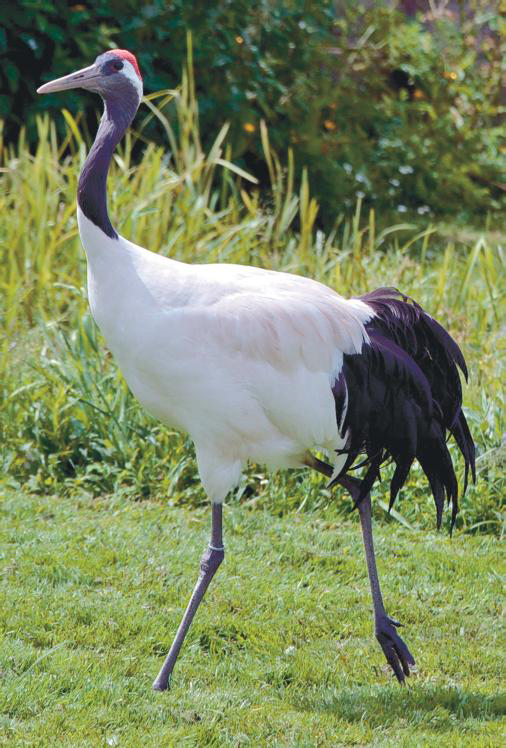
The Great Crane Project aims to reintroduce native cranes to the isle.

Beyond Slimbridge’s wetlands, the broad River Severn flows south, widening into the Bristol Channel, while across lies the Forest of Dean.

This hide fashioned from an old schoolbus represents creative recycling.
Views over Slimbridge
Don’t miss the Observation Tower, offering panoramic views over the Slimbridge reserve and across the marshes of the Severn Estuary. It closes half an hour before the rest of the center, so plan accordingly. The Visitor Centre also houses a café overlooking the grounds.
A day out at Slimbridge is a delight, whether you’re a wildlife enthusiast or not. The gardens are peaceful and the scenery enchanting. You don’t need to have a fascination with the different species to enjoy the experience, although almost everyone takes home memories of their favorite birds. Which remarkable creature will you fnd most appealing?
WWT reserves across the UK
The wildfowl and wetlands trust has nine reserves, one of which is in Northern Ireland.
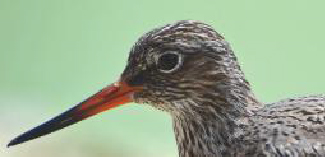
Arundel
West Sussex
Caerlaverock
Dumfriesshire
Castle Espie
County Down
Barnes
London
Slimbridge
Gloucestershire
Llanelli
Carmarthenshire
Washington
Tyne & Wear
Welney
Norfolk
Martin Mere
Lancashire
In the Neighborhood
Berkeley Castle
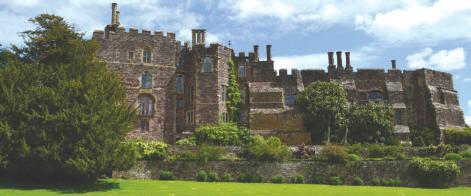
The frst castle at Berkeley was a motte-and-bailey, built around 1067 by william FitzOsbern shortly after the Norman Conquest. In 1327 Edward II was imprisoned here, and visitors today can see the cell where he stayed, just off the entrance hall. Legends persist that he was murdered with a red-hot poker, or perhaps by suffocation, although some say he was simply de-throned and exiled.
In the 14th century, the great Hall was given a new roof and it is here the last court jester in England, Dickie Pearce, died after falling from the Minstrels’ gallery. His tomb is in St. Mary’s churchyard, which stands besides the castle.
Edward Jenner’s Home

This is the home of the pioneer of vaccination, Dr. Edward Jenner. He was a family doctor who discovered that anyone who’d caught cowpox was immune to smallpox. It was a revelation that led to the frst immunization jabs being developed for the scourge. Visitors can explore Jenner’s former home, view exhibitions and a video about how vaccination strategies evolved and about how the immune system works.
There is also a hut in the garden, open to visitors, where Jenner treated the poor against smallpox, free of charge. Driven by a desire to end the horrible disease, he didn’t patent his treatment, and he didn’t seek fnancial reward.





Comments